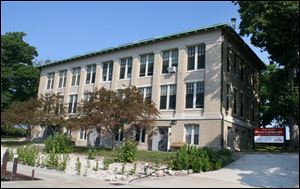
Sen. Brown discusses algae's impact on lake, tourism
9/5/2014
Sen. Sherrod Brown
THE BLADE
Buy This Image

Sen. Sherrod Brown
U. S. Sen. Sherrod Brown (D., Ohio) toured a biological research station on Put-in-Bay today to focus on Ohio's algae bloom problem.
Scientists told him phosphorous running off farm fields combined with climate change are causing dangerous algae blooms.
Local tourism officials joined with Sen. Brown afterward in Catawba to discuss the impact on tourism.
“Our fishing and tourism industries depend on a healthy Lake Erie,” Brown said. “But, harmful algal blooms can threaten the health of those industries, along with the health of our people and communities. That’s why we all must work together – community leaders, business owners, farmers – to solve this problem.”
Scientist Jay Martin, professor of ecological engineering at Ohio State, said the challenge is to get farmers to adopt practices that keep phosphorus out of rainwater runoff - practices that are difficult to implement because they can add time and money to growing crops.
Some of those practices are controlling drainage, applying fertilizer directly into soils rather than on the top, and timing fertilizer application so as not to occur just before a heavy rain.
Billy Market, general manager of Miller Boat Line, said the livelihoods of thousands of people and the water supply for millions depend on the quality of Lake Erie. He called the algae bloom problem "a ticking bio-time bomb."
Mr. Martin said OSU and other universities will announce a new research initiative in a couple of weeks. He said Toledo’s nearly three-day water emergency in early August has prompted a big influx of interest in new research.
"Toledo really brought things to a focus and it's had ripple effects," Mr. Martin said.

Ohio State University's main Stone Laboratory building on Gibraltar Island. The lab is the oldest freshwater lab and one of only two on a Great Lakes island.
Scientists took Sen. Brown out on the lake near the university's Stone Laboratory on Gibralrar Island to demonstrate how they test water for algae and oxygen, and how the water is studied for the effects of warming and phosphorus in causing dead zones. Algae decomposition robs the water of oxygen, stressing fish.
More than 450 farmers so far have applied for federal funding for enrollment in the Environmental Quality Incentives Program, which provides resources for producers to implement conservation practices, including preventive measures to reduce phosphorus runoff and prevent pollution in the Lake Erie Watershed.
The $3 million in funding will come from the Natural Resources Conservation Service.
More than $10 billion of the state’s nearly $40 billion tourism industry comes from counties along the Lake Erie shoreline, the state of Ohio reports.
Contact Tom Troy at: tomtroy@theblade.com or 419-724-6058.